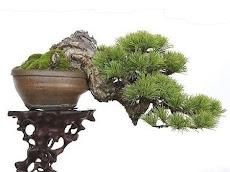By Brian J Worley
Feng shui is an ancient Chinese practice as old as Chinese culture itself (believed to utilize the Laws of both heaven and earth to help one improve life by receiving positive "spiritual energy" that is part of every living thing.
Feng shui literally means "wind and water," but this is merely shorthand for an environmental policy of "hindering the wind and hoarding the waters."
The elements, water, rain, wind, fog and sun were believed to be the energy of heaven and earth. Therefore Feng shui is frequently translated simply as "energy flow.
Most of today's feng shui schools teach that it is the practice of arranging objects (such as the placement of furniture) to help people achieve harmony with their environment.
By manipulating our position in our environment we can control the electro-magnetic energies that surround us
Taking all that into consideration, the origins of bonsai can also be found in the classical Chinese gardens over two thousand years ago.
These creations of carefully pruned trees and rocks are small-scale rendition of the natural landscape. Their artistic composition captures the spirit of nature and distinguishes them from potted plants. They are often referred to as living sculptures or as three-dimensional poetry.
Chinese gardens were created in the same way as a combination of landscape and paintings together with poems - this was the so-called "poetic garden."
The design of Chinese gardens was to provide a spiritual utopia for one to connect with nature, to come back to one's inner heart, to come back to ancient idealism Chinese gardens are a spiritual shelter for men, a place they could be far away from their real social lives, and close to the ancient way of life, their true selves, and nature.
By joining the two cultures, Feng shui and bonsai we can create a unique ancient corner of our garden or home to relax from the frustration and stress of our modern western world
The appeal of including bonsai into the Feng shui equation is that it offers something very practical and unique.
In other words, different trees work best with certain styles and can be placed in the position according to the energy flow of that location.
Each location and environment is different too for each bonsai, and have to be considered when choosing where to place you're Bonsai Tree.
Many garden plants have essential symbolism. Pine trees represent wisdom and bamboo represents strength and upright morality. Plum trees are also extremely valuable to the Chinese for their beautiful pink and white blooms during winter. By incorporating Feng Shui and bonsai in a corner of your garden or home you can create a special place to relax and live more harmoniously with nature The living bonsai will change from season to season and from year to ... and as time goes on it will become more and more beautiful. Enjoy



